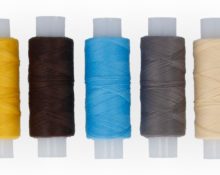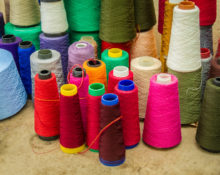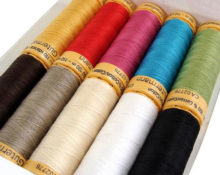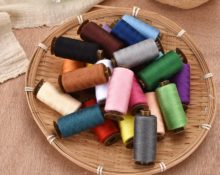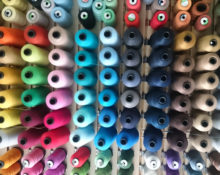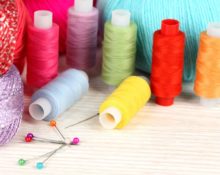Without threads it is impossible to sew clothes, knit sweaters and socks. Their history goes back about ten thousand years. At first, people used the thinnest animal sinews to sew the simplest clothes; later they were replaced by strong thin plant stems, then plant fibers from tropical plants and flax. What does a thread mean in the modern world, and what functions are assigned to it, read on.
Threads - what is it?
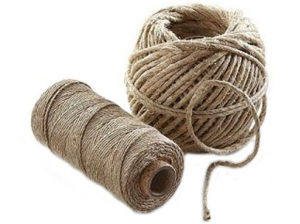 So called the finest yarn, twisted in several folds and having a maximum length. The main function performed is the production of fabric, the strong connection of clothing parts into a finished product. Threads are also used as the basis for factory-made knitwear and hand knitting of various wardrobe items.
So called the finest yarn, twisted in several folds and having a maximum length. The main function performed is the production of fabric, the strong connection of clothing parts into a finished product. Threads are also used as the basis for factory-made knitwear and hand knitting of various wardrobe items.
Several meanings of the word
This is a polysemantic word. In Russian it is associated not only with a flexible and highly elongated object made of fibrous raw materials, but also with a twisted tungsten filament in an electric light bulb (filament), with a huge cosmic structure in the vastness of the Universe (Galactic filament).
It is found in popular expressions and sayings:
- Ariadne's thread is a saving hint;
- soaked to the skin - completely wet;
- robbed to the skin - everything was stolen;
- the story is sewn with white thread - an obvious lie.
How do you get threads? Manufacturing technology
Let's consider the stages of obtaining products from cotton raw materials, which undergoes four main operations:
 caning. Consists of putting together 2 or 3 threads, not yet twisted or worked, being simply a long thin fiber;
caning. Consists of putting together 2 or 3 threads, not yet twisted or worked, being simply a long thin fiber;- torsion. They are twisted together at a certain stretch. This is how the product gains strength. The process is carried out with 2, 3, 6, 9, 12 folds, the number of threads depends on the further purpose. For the viscose variety, 18-thread plying can be used;
- finishing. At this stage, with the help of chemical compounds, the threads acquire a marketable appearance, then the white and light ones are bleached, the rest are dyed in different colors;
- finishing and polishing. The operation is performed to gain softness, smoothness, elasticity, and additional strength under mechanical influences such as stretching and friction. This is achieved with the help of starch compounds or other types of glue (for a shiny product), additional introduction of stearin or wax (increases shine), fat and organic silicon (for dullness of the product).
Important! Threads made from chemical fibers travel a shorter route because they are not subjected to finishing and polishing, but are subjected to antistatic treatment.
Types of thread compositions
According to the composition of the raw materials, the types of threads are as follows:
- cotton;
- linen;
- woolen;
- silk;
- chemical.
The raw materials for chemical products are polyamide, polyester, viscose, polynose, fluorlon, lavsan, propylene, vinylon, polyvinyl alcohol monofilaments. The list does not end here, it can be continued. All of the listed types made from natural raw materials have many advantages, but The chemical component of mono- and combined threads today best corresponds to the mixed compositions of modern fabrics.
Classification of threads
These products have different purposes. Depending on the purpose of use, threads can be sewing, knitting, embroidery, darning. Here we take only those varieties that we encounter more often than others in everyday life.
Sewing
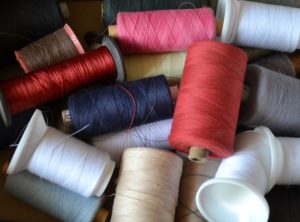 This is the most common type. Most often we use cotton threads, less often silk threads. They have been almost completely replaced by synthetic analogues, which are not so expensive, but are better colored and have many positive qualities. The use of linen is limited to shoemaking and saddlery.
This is the most common type. Most often we use cotton threads, less often silk threads. They have been almost completely replaced by synthetic analogues, which are not so expensive, but are better colored and have many positive qualities. The use of linen is limited to shoemaking and saddlery.
Sewing threads vary in fineness, which has a numerical designation. A thin thread is indicated by a larger number, a thick thread by a smaller number. For thick matting, take products with No. 10 or 20, and for light, thin fabrics - No. 50 or 60. The main requirements for them are evenness, stretchability, and strength. The product is produced wound on reels or bobbins (for factory production).
For embroidery
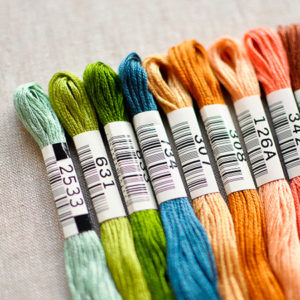 It is clear that the purpose of this type is very narrow - creating colored or solid patterns by attaching stitches to fabric. Threads are produced in skeins of 10 or 20 m and are easily divided into 6 thinnest components. The embroidery variety is called floss. The requirements for it are completely different: the uniformity and strength of the dyeing comes to the fore, because if the thread breaks, then it’s not a problem, but a faded embroidered ornament is simply a disaster.
It is clear that the purpose of this type is very narrow - creating colored or solid patterns by attaching stitches to fabric. Threads are produced in skeins of 10 or 20 m and are easily divided into 6 thinnest components. The embroidery variety is called floss. The requirements for it are completely different: the uniformity and strength of the dyeing comes to the fore, because if the thread breaks, then it’s not a problem, but a faded embroidered ornament is simply a disaster.
Knitting
They more often called yarn. This variety is used for machine and hand knitting. Such threads are obtained from natural or synthetic raw materials. They are wound into bobbins of 1–2 kg for factory knitting and into skeins of 25, 50, 100, 200 g for manual labor. Can be of different thicknesses and different twists for knitting or crocheting.
Important! Combined versions of knitting threads, in which a small percentage of synthetics is added to wool, are quite popular. Acrylic makes the thread stronger and more wear-resistant, pleasant to the body, and retains its bright color.
Natural yarn is produced from the wool of sheep, camels, Angora goats and rabbits, alpaca, and merino. Warm clothes are knitted from it and carpets are woven. Natural yarn made from plant fibers - cotton, linen, bamboo, as well as nettle or hemp. It is used for summer and light items. Artificial fibers are represented by viscose and acrylic components, used as additives to natural yarn or independently.


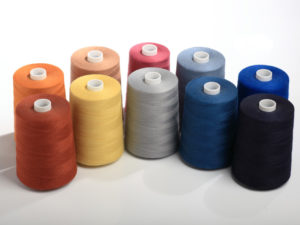 caning. Consists of putting together 2 or 3 threads, not yet twisted or worked, being simply a long thin fiber;
caning. Consists of putting together 2 or 3 threads, not yet twisted or worked, being simply a long thin fiber; 0
0